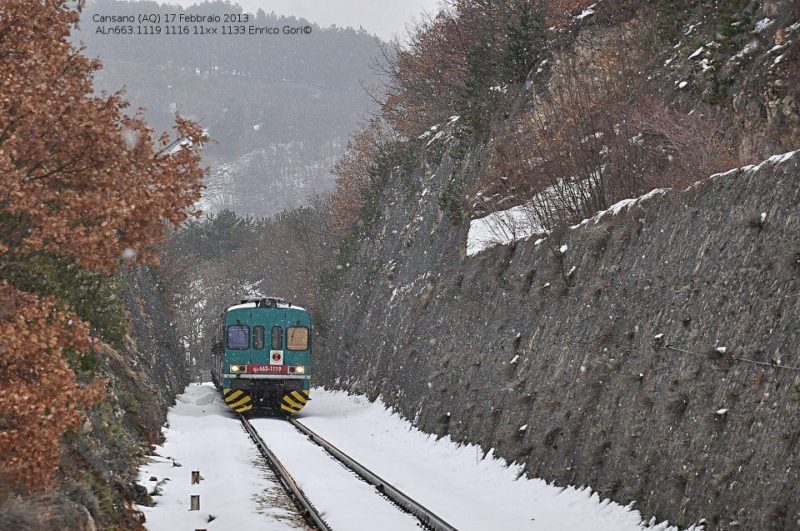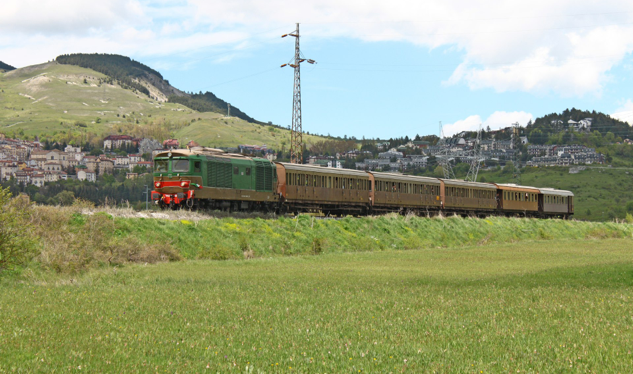
Sulmona-Isernia Railway
This post is also available in:
 Italiano (Italian)
Italiano (Italian)
The Sulmona-Isernia is a secondary railway line in Abruzzo and Molise, commercial traffic-free since 2010-2011, which connects the city of Sulmona to Isernia. It’s some 80-mile long and it has four intermediate stations between the two terminals.
It has been nicknamed “the Trans-Siberian railway of Italy” due to the breath-taking sights offered during each trip – particularly evocative in winter, with abundant snowfalls. This railway track runs across the major plateaus of the region.
The 80-mile route starts in Sulmona towards Pettorano sul Gizio, and then climbs up towards Cansano, and Campo di Giove. The train thus reaches the ski resorts of Rivisondoli and Roccaraso (after Palena station) and descends towards Scontrone and Castel di Sangro – right after Sant’Ilario Sangro station, all the way to Carpinone and Isernia. At Rivisondoli-Pescocostanzo station, the railway travels at 4.162 ft above sea level as the second-highest Italian railway after the Brenner Pass one.
The track is used for commercial transport only in the last very short section of Molise Carpinone-Isernia, while the actual Sulmona-Carpinone stretch is available only to special tourist trains and officially acknowledged as a portion of the “Binari senza tempo” (“Timeless Track”) historical heritage.
Historical notes
On June 13, 1885, the Public Works Council approved a project for the construction of a railway line connecting Sulmona to Isernia, already mentioned in the “Baccarini” Bill in 1879. For its construction, three service railways had to be built: from Roccaraso to Castel di Sangro, from Castel di Sangro to Carovilli, and from Cansano to Roccaraso (the latter section remained in service for five years after the partial opening of the Sulmona-Cansano stretch).
This post is also available in:
 Italiano (Italian)
Italiano (Italian)
Contatti
Isernia(IS)

